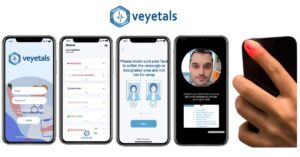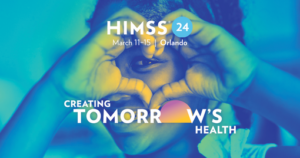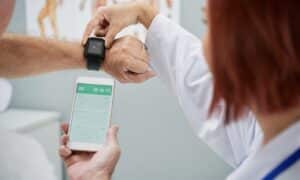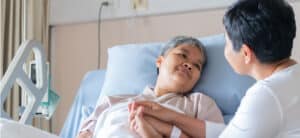Medically Reviewed By: Gideon Kwok
Image Credit: Canva
Key Takeaways
- Technological Innovation and User Empowerment: Vitals tracking apps, empowered by rPPG technology, are transforming health monitoring by providing users with the convenience of tracking vital signs like heart rate, blood pressure, and oxygen saturation on personal devices. This shift offers greater control and engagement in personal health management.
- Challenges in Accuracy and Reliability: While these apps represent a significant advancement, their accuracy can vary due to factors like skin tone, ambient light, and user error. The need for calibration and validation against clinical-grade devices is crucial for ensuring reliable health monitoring.
- The Importance of Standardization and Collaboration: Establishing standardization protocols is essential for the integration of these apps into healthcare systems. Continuous improvement through technology advancements and collaboration between app developers and healthcare providers will be key to their future success and reliability.
The makers of health monitoring devices and their partners in software development have been talking a big game for a while now. They keep reminding us that health monitoring is increasingly shifting from traditional clinical settings to personal devices, and the health practitioners of the future will more often than not be performing his functions from behind a computer screen. Well, will they have confidence in the accuracy and reliability of vitals tracking apps? With the rapid emergence of technologies like remote Photoplethysmography (rPPG) and the proliferation of telehealth vital signs apps, practitioners are under tremendous pressure to adopt and adapt, or be left behind; and to take that step with confidence, they need to understand and evaluate the precision of these digital tools . In this blog, we will try and discover what these vitals tracking apps bring to the table, and try to arrive at some clarity vis-a-vis their accuracy and reliability.
The Rise of Vitals Tracking Apps
A Technological Leap
The integration of rPPG technology and other advanced methods in apps for tracking vitals has proved to be – for want of a better cliche – a game changer; literally. These apps, available on smartphones and wearables, allow users to monitor various health metrics such as heart rate, blood pressure, and oxygen saturation with just a few taps. They most certainly have changed how the metrics monitoring game will be played from now on; very much like a game, on your smart device of choice.
Convenience and Empowerment
Individuals, empowered as they feel with these apps, are enjoying the convenience of being able to check their vitals on an app and therefore take a more proactive role in managing their own health. The sense of control and immediacy that was previously unattainable for the average person is allowing them to be somewhat more engaged, and therefore more responsive to advice.
Assessing the Accuracy of Vitals Tracking Apps
Understanding rPPG Technology
rPPG technology uses light-based sensors to detect blood volume changes and this innovative concept is at the heart of many vitals tracking apps. Intuitively it sounds a very logical thing to track and therefore offers a non-invasive and easy way to gather data; but its accuracy can be compromised by factors like skin tone, ambient lighting conditions, and sudden movement by the patient.
Comparative Studies and Research
It is therefore a little disturbing to note that several studies that have compared the readings from these apps with those from traditional medical deviceshave often shown a varying degree of accuracy, with some apps performing remarkably well and others showing discrepancies. Like the irritating third child on every holiday trip, we then have to ask: “are we there yet”? Or are we not?
The Role of Calibration and Validation
Do you remember ever having accompanied your dad – or maybe your granddad – to his favored horologist. (And I just made you open the dictionary.com app, didn’t I)? Watchmaker; just that. And grampa wanted his wrist watch re-calibrated. Grampa’s friend – who looked as ancient as grampa – would knock out the back of the watch, then look very closely at a very fancy and complicated timepiece kept safe in a locked cabinet, would tinker around in grampa’s watch and eventually announce with dramatic flair: “there! It’s been calibrated”. That’s it; measured against a “standard”. And just like the watch, an app also needs to be calibrated and validated against clinical-grade devices to provide accurate – and reliable – readings . This process is crucial in ensuring that the app can be trusted for reliable health monitoring.
The Reliability Factor
Consistency Over Time
Reliability is not just about accuracy at a single point in time, but also about consistency in readings over time. Apps that exhibit significant fluctuations in readings under similar conditions may not be reliable for tracking health trends.
User Factors
How users interact with these apps can also impact reliability of their output negatively. Misalignment, improper use of sensors, or failure to follow usage guidelines can lead to inaccurate readings. And then you’ll have to take grampa to get it calibrated again.
Telehealth and Remote Monitoring
Telehealth Vital Signs Apps
Apps designed to monitor vital signs play a crucial role in the operation of remote patient management services that fall under the umbrella of telehealth. The stakes here are very high, as healthcare providers rely on the data generated by these apps to make clinical decisions for patients who are not physically present and, given the delicate nature of the healthcare industry, there really is no room for error.
The Challenge of Standardization
With the growing number of vitals tracking apps, we will need to establish some standardization protocols soon, or continue to run the risk of different devices and apps providing conflicting data for the same patient under the same conditions. Establishing universal benchmarks for accuracy and reliability is essential to convincing healthcare systems decision makers that the apps are good and ready to be integrated into their systems without fear of failure of error.
Navigating the Market
User Reviews and Feedback
When choosing a vitals tracking app, user reviews and feedback can provide insights into the app’s performance and user satisfaction levels in real-world conditions.
Looking for Certification and Endorsements
Apps that have been certified or endorsed by health organizations or have undergone clinical trials offer a higher level of trustworthiness.
The Future of Vitals Tracking Apps
Continuous Improvement
As technology advances, these apps will evolve and undergo continuous improvements in their accuracy and reliability. The data analysis and interpretation capabilities of these apps could be further augmented by integrating with AI and machine learning.
Collaboration with Healthcare Providers
Ongoing cross-functional collaboration between app developers and healthcare providers is crucial for the future development and integration of these technologies into mainstream healthcare.
Conclusion
The future of healthcare is increasingly digital, and vitals tracking apps are at the forefront of this transformation, promising more accessible and personalized healthcare for everyone. Working with them is like making a new friend from a different country, learning their language, their culture, their literature, their humor. Navigating the accuracy and reliability of vitals tracking apps is a journey of understanding the technology, acknowledging its limitations, and recognizing its potential. While these apps offer unprecedented convenience and empowerment to users, it is vital to approach them with an informed perspective, especially when using them for health decisions. Just the tiniest bit of mishandling, and a beautiful friendship can end in disaster.

Revolutionize Your Wellness Routine: Monitor Vital Signs Anywhere with Veyetals App

Experience the Future of Vitals Monitoring at HIMSS 2024

Understanding the Game-Changing Impact of Heart Rate Monitors on Cardiovascular Care and How You Can Use It
Unlock Your Health: Exploring the Power of Biometric Tracking for Wellness Insight

Revolutionizing ICU Patient Care: The Future of Contactless Monitoring Systems




